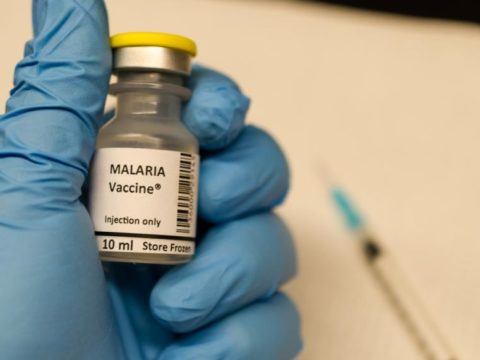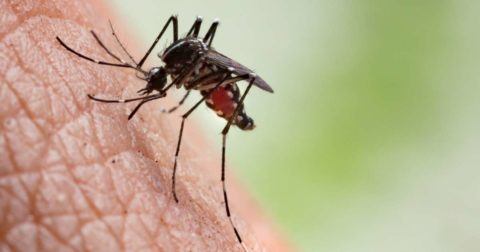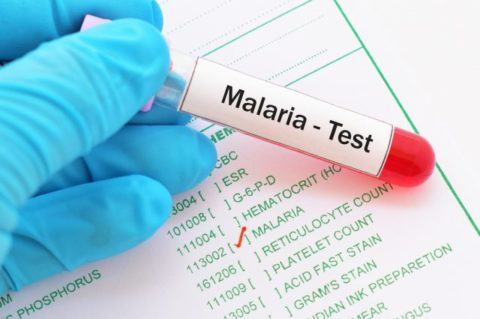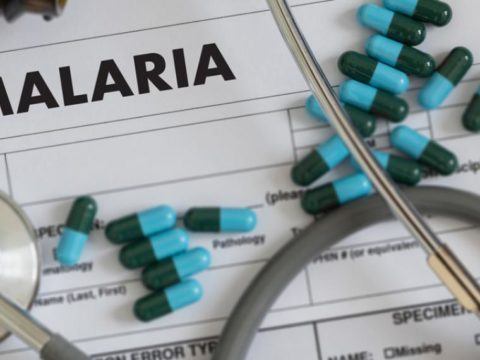Malaria: causes, symptoms, and treatment
One of the most serious or dangerous diseases that exist is the malaria that still affects a large part of the population in the third world. We are talking about the Malaria: causes, symptoms and treatment.
What is malaria?

Malaria is an infectious disease caused by a parasite called Plasmodium . Malaria is transmitted exclusively through the bites of infected mosquitoes . These mosquitoes are present in Africa, Central and South America and in Asia. In the human body, the malaria parasites multiply in the liver and, therefore, after a variable incubation, they infect the red blood cells.
Malaria is the most important parasitism and the second most serious infectious disease in the world due to morbidity and mortality after tuberculosis, > with 500 million new cases per year (of which 90% occur in tropical Africa) with 1 million deaths per year.
40% of the world's population lives in areas where Malaria is endemic in tropical and subtropical areas and at a height of less than 1800 meters. Every year, between 10,000 and 30,000 European and American travelers get sick officially with malaria.
The increase in international travel in recent decades and the presence of migratory flows from countries where the disease is endemic has produced an increase in cases of malaria in countries where the disease is not transmitted, due to the lack of carrier mosquito.
All cases in Europe they are imported , that is, the infection occurred in countries where the disease is present and is not transmitted from person to person. Occasionally, some autochthonous cases have occurred, that is, the disease has occurred in people who have not traveled to endemic territories. These cases were manifested as a result of the bite of mosquitoes that were transported by airplanes (malaria at airports). The possibility of mosquito contamination through means of transport such as boats and airplanes should be considered. Malaria treatment and control has become more difficult because parasite drug resistance has spread like wildfire in many regions of the tropical zone.
Diagnosis Malaria should be considered for all people with typical symptoms and who have resided in countries where malaria is present (every fever in the endemic area is malaria until proven otherwise) so that we must know the causes better and then see what symptoms the disease has.
The causes of malaria

Malaria is an infectious disease caused by protozoa of the genus Plasmodium (P. falciparum, P. vivax, P. ovale, P. malariae) transmitted to humans by mosquito females of the genus Anopheles .
There are 4 specs Major Plasmodium ies that can infect humans:
- P. falciparum : endemic to tropical Africa, with a lower prevalence in Asia and Latin America;
- P. vivax: is found everywhere in tropical areas; in Africa it is present by outbreaks in the territory; it is instead endemic in Latin America and Asia; It is also present in some temperate zones.
- P. ovale : it is present mainly in West Africa between the two tropics.
- P.falciparum is life threatening .
Because the vector mosquito can reproduce and survive in the environment, the temperature should not fall below 18 ° C. Transmission of the parasite, through the bite of the mosquito, can occur throughout the year in regions where the temperature is constantly above 24 ° C.
In regions with temperatures lower, transmission tends to follow seasonal rhythms. The mosquito female anopheles, the only one that transmits malaria, lives between three and six weeks and moves within a radius of 1 or 2 kilometers.
The symptoms of malaria

Initially, The symptoms of malaria sometimes present with a characteristic similar to the flu between 8 and 30 days after infection. We must take into account when evaluating the symptoms in addition, the different phases that occur in the disease.
Symptoms in the invasive phase
Corresponds to the rupture of the schizont and the release of the merozoites that invade other erythrocytes. Occurs with intermittent fever, chills, sweating, headache, arthromyalgia , sometimes reactivation of cold sores, prostration, pain in hypochondria, gastrointestinal syndromes (diarrhea, vomiting, abdominal pain). In addition, febrile seizures can occur in children.
Symptoms in the late phase
When the life cycles of the various stages are synchronized present strains, appears the Terzana fever (typical malaria attack): shaking followed by a thermal increase that resolves after a few hours with profuse sweating and a state of vague euphoria, and repeats every 48 hours. Splenomegaly usually appears after days or weeks; At first, hepatomegaly is more frequent. Mucosa-cutaneous pallor, jaundice, hyperchromic urine (intense coloration) are unfavorable prognostic signs.
Malaria resurgence
It is the relapse caused by the persistence in the circulation of the intraerythrocytic forms (in the red blood cells). It is typical of inappropriately treated P. falciparum infections (for the quality and/or duration of treatment and for the dose) and may have a latency of a few days to a few weeks. It can also be found in P. malariae infections with a latency of many years.
The nuchal headache, tremors and the alternation of heat and cold are almost constant, with an aggravating discomfort. P. falciparum infections that are not treated or treated improperly can cause kidney failure, pulmonary edema, intracranial hypertension with coma, and death. Death is caused by cell stacking parasites in the microcirculation of different vital organs, particularly in the cerebral circulation (cerebral malaria), damaging them.
Treatment against malaria

Each year there are 500 million cases of malaria in the world with approximately 1.3 million deaths .The pharmacological prophylaxis is strictly individual and can vary not only from person to person, but also depending on the country visited, the duration of the traveler's stay in the same, as well as the period of the year in which the stay is made.
As for avoiding the mosquito bite, we have to say that this particular one is attracted by carbon dioxide concentrations. Dark colors attract the insect in question that uses the bite at sunset and during the early hours of the night. Some p erfumes or natural fragrances can attract mosquitoes and cause bites. Within homes, the protection of windows with networks treated with insecticides and the use of mosquito nets impregnated with insecticides on beds can provide good protection; In addition, the use of air conditioning greatly reduces the risk of insect bites.
As for those medicines that we can take to prevent and treat malaria, we have to say that the most used drugs they are chloroquine (in areas without resistance), chloroquine + proguanil, or mefloquine, doxacycline or sulfadoxine-pyrimethamine in areas where chloroquine resistance was found. In endemic areas, malaria control is based on rapid diagnosis and rapid treatment of the infected person according to clinical symptoms and on a microscopic diagnosis, if possible. Obviously, the active drug against the local parasite should be used and the choice will also be influenced by the resistance present in the area. Cerebral or severe malaria is fatal if it is not cured and requires immediate hospitalization and treatment with intravenous hydrochloric quinine.
We must then give this disease the importance it requires , and treat it as much as possible. before knowing that when traveling to countries where the mosquito that transmits it is present, we will be at risk of contracting malaria.
Article of interest:


